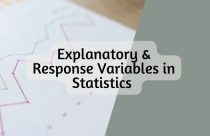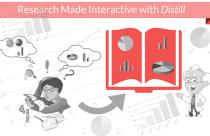Tips for Creating Tables: How to Get Them Right

A cornerstone of scientific manuscripts that are successfully published is their judicious and effective use of tables and figures. The former are best used to depict trends in the data, such as time-series and distributions, especially if they are statistically significant, and for showing complex interactions of factorial analyses (think 2- or 3-way ANOVA). In the last several decades, however, there seems to be a greater emphasis on using figures in papers at the expense of tables. Two plausible reasons for this are the stringent length restrictions adopted by nearly all journals and the ease with which one can now make a variety of figures using software (e.g. Sigmaplot). So, should authors just abandon tables altogether?
When to Use a Table?
Tables still have a key role to play in manuscript writing, especially for empirical research that presents new results. Admittedly, on a printed page, tables are seen as costly vis-à-vis their occupation of space. Fortunately, as more journals go online there is more digital space available for housing supplemental information of a manuscript. The use of tables here is a “no-brainer”. An excellent example of a supplementary table might be a large reference table that ought to be archived or detailed statistical tests. While most tables are numerical, they may be textual too (e.g., listing of competing hypotheses to explain a phenomenon).
A useful heuristic is to use a table only if it presents detailed information or data that is important to the research and objective at hand; for example, a table summarizing the predictions of a model or experiment, or the analyzed environmental variables of experimental plots or study sites. Indeed, the primary function served by tables in communicating research is to help readers grasp information quickly and easily, and learn how numbers are related to concepts in a study. Tables should also be used when many specific numerical results must be reported and when the reader would benefit from analyzing orderly comparisons of the data.
Before creating tables, it is imperative to think about why they are required. What purpose will they serve? It helps to keep in mind, during manuscript preparation, the target journal. Some journals limit the combined number of tables and figures they publish. This means that the authors would need to carefully consider the type and number of tables to present. Where 1-2 sentences might suffice to describe your table’s data, it might be useful to omit the table. With online space for supplementary information being made available by most journals, the use of tables to display all the output details of statistical analyses (e.g., Regression, ANOVAs) is increasingly in disuse, perhaps with good reason.
Key Features of a Good Table
Every table must carry a caption that lies above the table’s body (rows and columns), and which should be left justified. Some journals require a brief, informative title phrase, often in bold type. In any case, the caption text should be succinct and clear, and most importantly, self-explanatory. That is, good tables—as with figures—are able to “stand-alone”, apart from the main text. For example, in field biology, authors should include the studied species full names, where they were surveyed and when. A reader skimming through the article should be able to glean what the study was about from the tables and figures.
Many students and junior researchers often wrestle with the table layout. The question of how to arrange and present the data is not a trivial matter, but there is no clear-cut answer. The best orientation will most easily highlight the results based on the type of data collected and analyses applied. For example, it is common for response variables to occupy columns, with the independent variables or factors as rows. In every table, at least one top row is reserved for column headings (with units), below which lies the table body (data/results). The simplest table has at least three demarcating rows, but more can be used effectively to indicate mean values, sums, or statistics (e.g., F-, P-values). Indeed, the table is a flexible tool and may become complex, especially when hierarchal comparisons or date is summarized.
Tables are almost always numbered consecutively with Arabic numerals. Footnotes are often underappreciated and overlooked during manuscript preparation and writing. When necessary, footnotes can prove to be useful tools to provide an explanation, or to reference a column or row subheading by a superscript symbol, number, or letter; for example to spell out abbreviations or denote significance levels. As a rule of the thumb, footnotes are always placed below the body of the table. Journals have their own formatting style in place; hence, authors must be sure to read the author instructions about how to create and format tables before submitting the manuscript. eAuthors must ensure that all tables are referred to within the main text (e.g., as ‘Table 1’, and not ‘Table one’). Specifically, multiple tables should be cited in order and with relevant context. In the manuscript text, avoid repeating the numerical data presented in the tables.
Other Useful Tips
Authors should aim to keep the tables neat and legible. The rows should be double-spaced whenever possible. Unless the journal’s author guidelines specify otherwise, it is recommended to have one table per page. It is advisable for authors to revisit their tables to be sure that a reader can make sense of it. Incorporating one or more tables in a manuscript requires thoughtful consideration and execution. When done properly they support the main text, and help narrate the scientific ‘story’—and readers will appreciate it. Tables are powerful tools because they can convey a large amount of data, in an organized manner, in a relatively small space. It is the authors’ responsibility to use them wisely.








